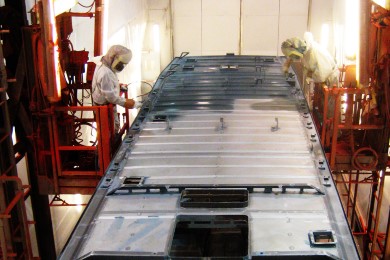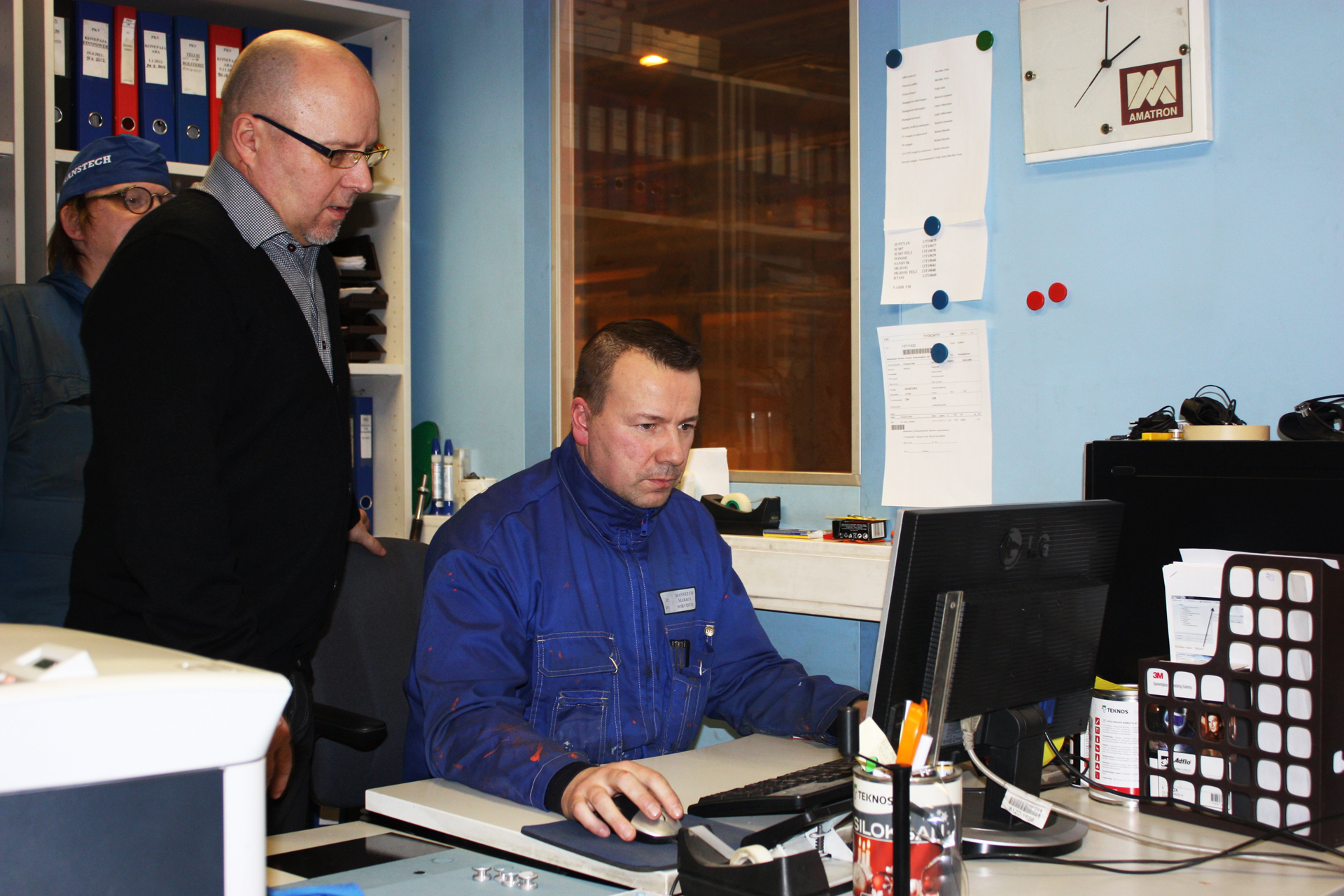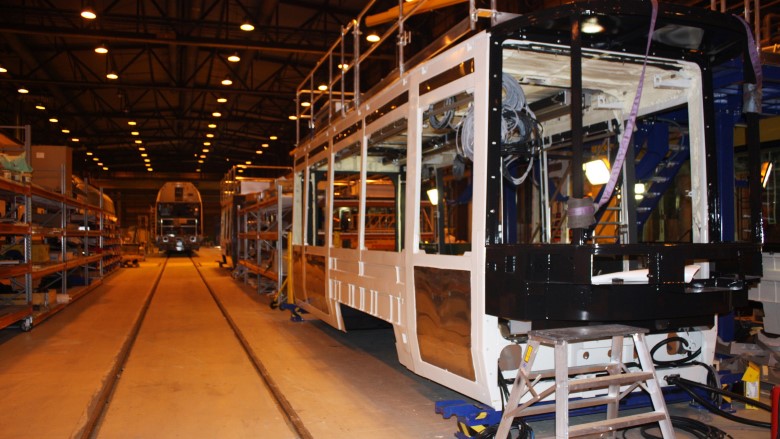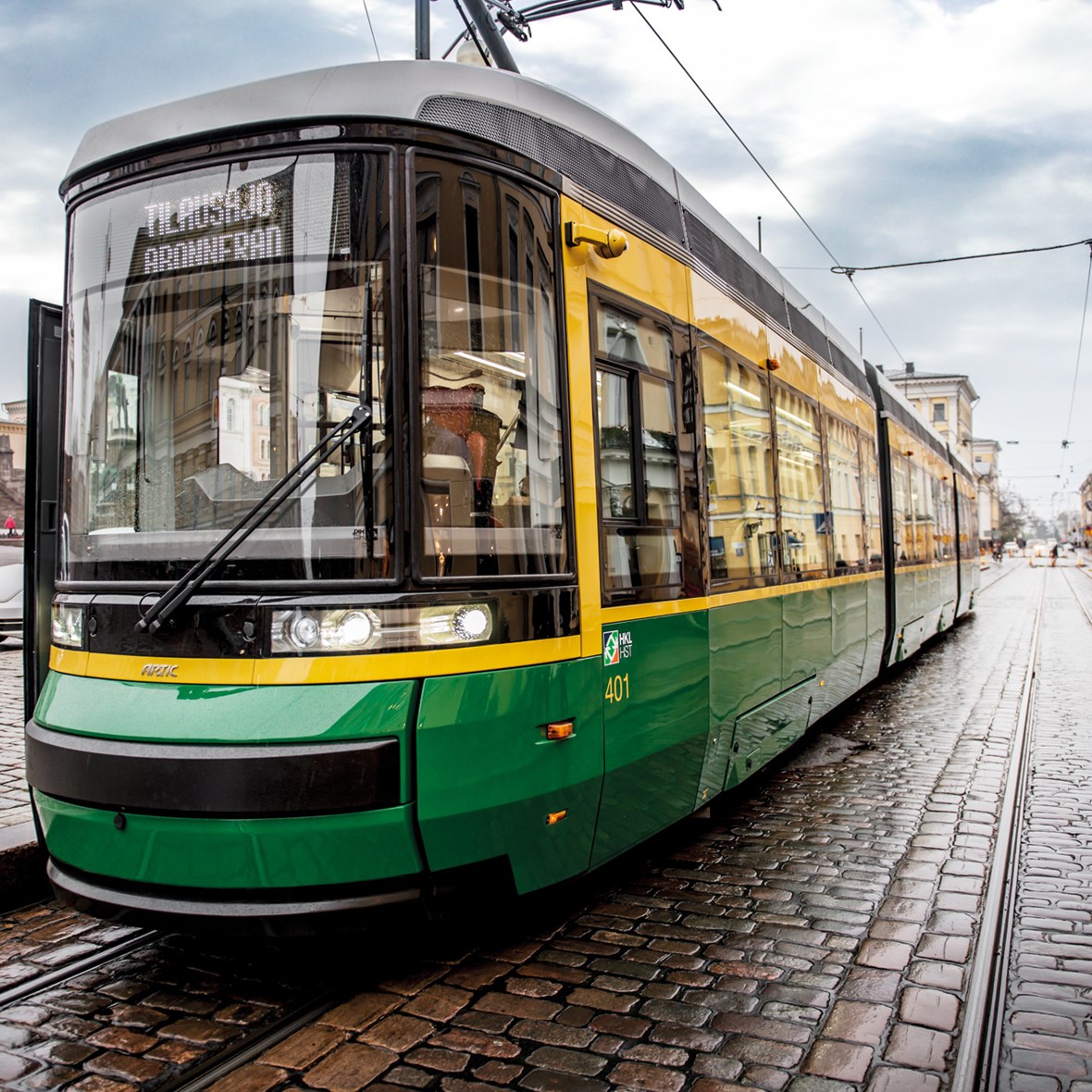Transtech’s Director Esa Rintala of Otanmäki Works (on the left) and Production Engineer Jukka Savilampi.
New Transtech trams are built to withstand the harshest of conditions
New trams designed and manufactured by Transtech are introduced to the streets of Helsinki. Able to withstand the harsh city’s maritime climate and urban conditions, these new trams are designed to meet the transport needs of the Helsinki metropolitan area for several decades.
Seasonal temperature variations can be relatively substantial in Finland. In summer, the temperature can climb to +30 and above, while in winter, it may drop well below -30 degrees. Even within a 24-hour period, the temperature can easily change by dozens of degrees. In addition, the humid maritime atmosphere and sand and salt spread over the streets in winter create conditions that are highly conducive to corrosion.
Helsinki City Transport HKL and Finnish rolling stock manufacturer Transtech have concluded a contract for 40 new trams. This contract includes an option for another 90 trams, if the expansion of Helsinki’s tramway system progresses according to plan.
The roll-out of the first new tram took place in Otanmäki on 13 June, 2013. The new low-floor trams are 27.3 metres long. They have 73 fixed seats, with a total passenger capacity of more than 140. In addition, the tram has room for four wheelchairs or prams.
The understanding of local conditions ensure the high quality and functionality of the new trams in the most challenging of environments - just as with any other product manufactured by Transtech.
Designing steel structures with painting in mind
Compatibility of materials is an important aspect in the surface treatment of steel structures. The steel structure design involved planning the anti-corrosive treatment of the tram’s body, including painting. Structural steel was selected after examining various steel types. Choosing the right materials is very important to anti-corrosive treatment. In addition, hollow shapes that would compromise the tram’s corrosion resistance have not been used in the structures forming its body.
Painting-related research involved field testing and laboratory experiments. The zinc epoxy paint TEKNOZINC 90 SE was selected as the primer, and TEKNODUR COMBI 3560-78 high solids polyurethane paint as the top coat.
Choosing the right materials is very important to anti-corrosive treatment.
 “Zinc is a good solution. As a less precious metal, it absorbs the punishment in possible damaged sections and provides cathodic protection for the area affected by a corrosive element. For example, we performed salt spray tests on test sheets cleaned using a specified pre-treatment method and coated with zinc-rich paint", explains Production Engineer Jukka Savilampi of Transtech.
“Zinc is a good solution. As a less precious metal, it absorbs the punishment in possible damaged sections and provides cathodic protection for the area affected by a corrosive element. For example, we performed salt spray tests on test sheets cleaned using a specified pre-treatment method and coated with zinc-rich paint", explains Production Engineer Jukka Savilampi of Transtech.
“In the surface treatment process, method development was used to determine the correct order of process steps when spraying the zinc-rich paint. This is important to the outcome of the paint work, because coating the tram’s body structures using the wet painting method often means that paint ends up beyond the target areas. Application of the finishing coat is carried out in a different order”, Savilampi adds.
Once the finishing coat is complete, the tram carriage receives a coat of protection spray that shields the painted surface from blows and wear and tear. The efficiency of all coating solutions has been tested for any combination of products, and they complement each other in providing anti-corrosion protection.
Each step is inspected
Surface Treatment Quality Inspector Marko Sorvisto checks the surface treatment reports carefully. Each step of the process is inspected in accordance with standards, and possible deficiencies are corrected. Work does not continue until all of the steps have passed the inspection. The results are also documented in the company’s quality management system.

The first inspections of steel work concern the quality grade and degreasing, and are performed before blast-cleaning. Before priming, it must be ensured that the surface is sufficiently coarse from the blast-cleaning.
The batch numbers, paint film thickness, pull-off test results and painting conditions of the primers and top coats used are faithfully recorded in tram-specific measurement reports. Sorvisto states that the paint system used for the new trams has excellent adhesion: in fact, the pull-off test results have more than met the requirements of the standard. The painting process for each tram includes tests sheets, some of which are stored for future reference, while others are placed outdoors for field testing
“A product can be traced using measurement reports, which can also be used to perform quick analyses later on”, explains Marko Sorvisto. As the surface treatment quality inspector, Sorvisto has a comprehensive view of the level of quality of the finished products. “Our employees are highly skilled professionals”, Sorvisto commends.
Product development has deepened cooperation
Teknos and Transtech have cooperated for many years. Product development activities have led to even closer cooperation. Transtech’s Director Esa Rintala of Otanmäki Works mentions customer service and problem solving as Teknos’ strengths.
“The engineering industry is among the most significant users of paint, making us a convenient partner for testing and searching for new solutions”, says Esa Rintala.
“As a company, we aim to be a forerunner in both materials and products”, Esa Rintala concludes.

Transtech’s engineering workshop has an impressive 5.1 hectares of space; you could fit six football fields inside it.
